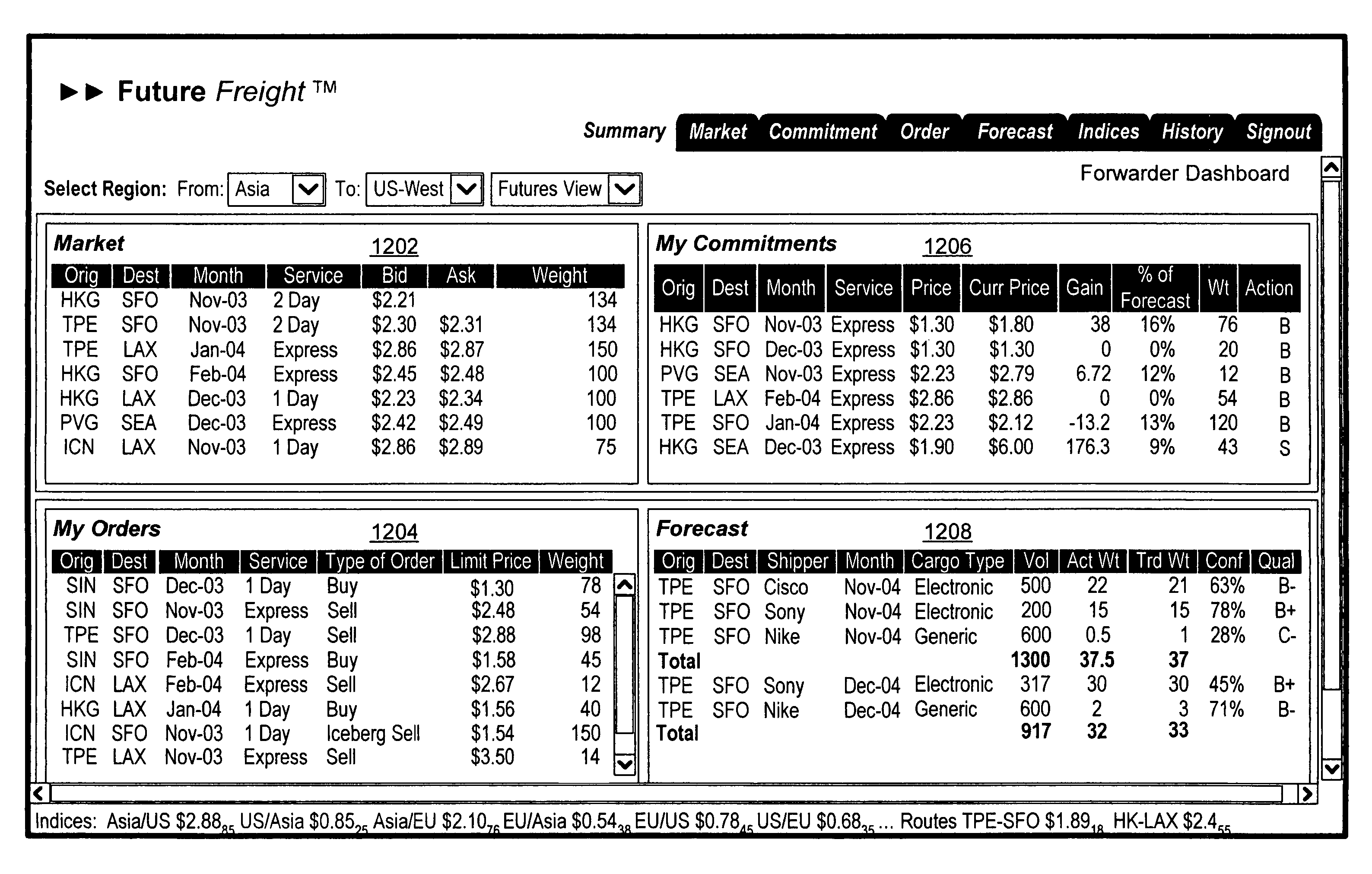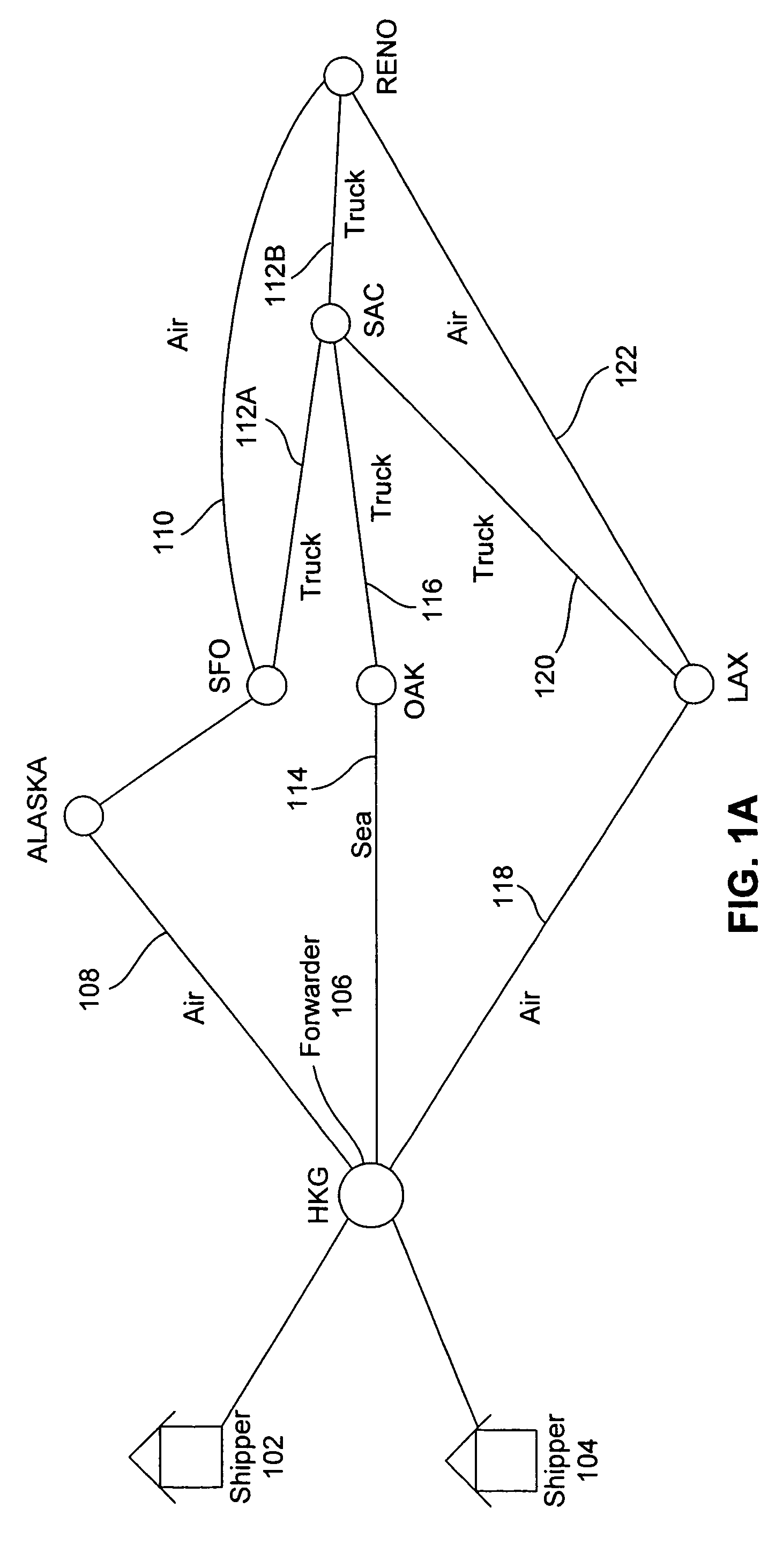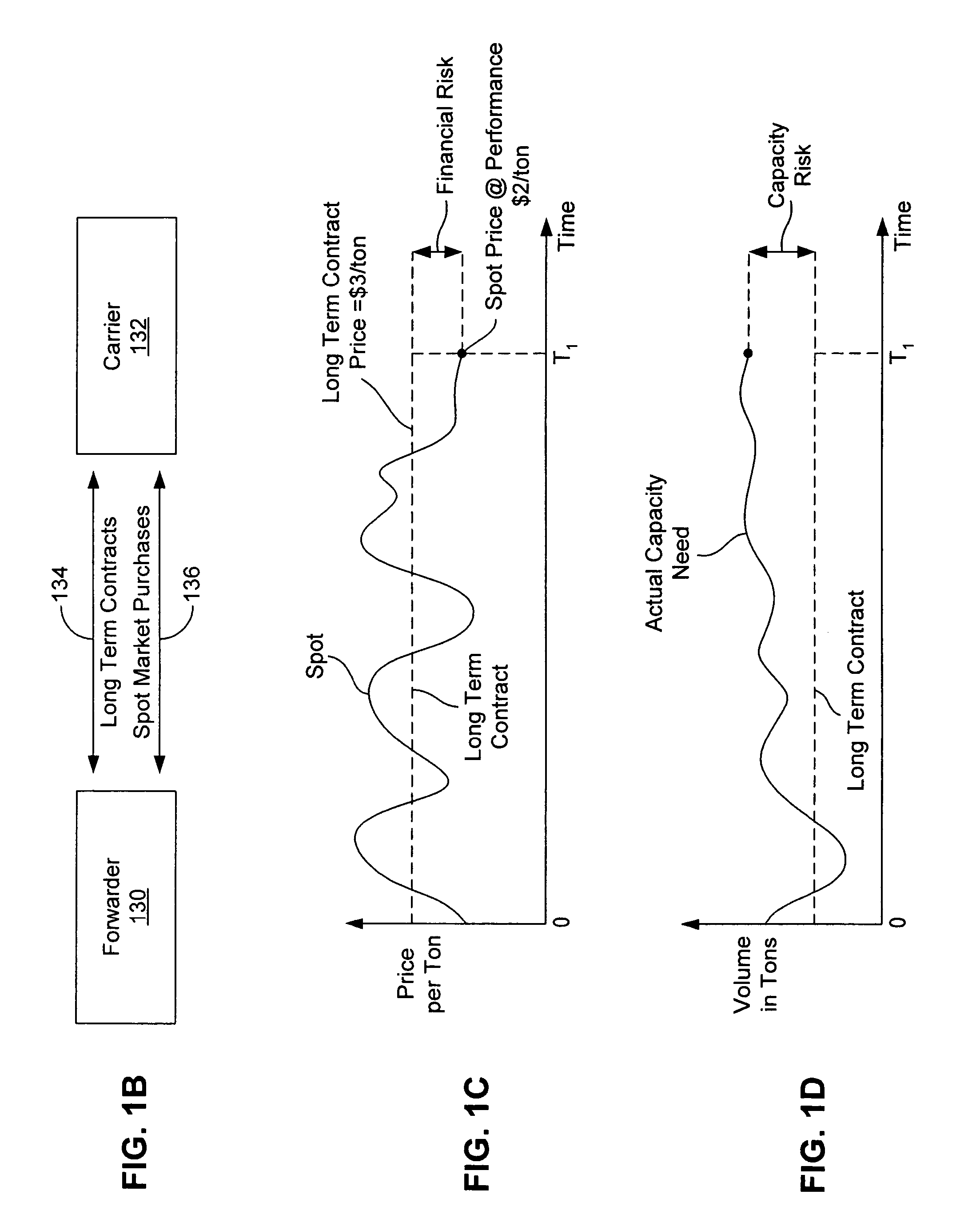Freight fulfillment and trading platform
a technology for applied in the field of freight fulfillment and trading platforms, can solve the problems of insufficient capacity, shipper inability to tolerate capacity starvation, and introducing pricing and capacity risks for shippers
- Summary
- Abstract
- Description
- Claims
- Application Information
AI Technical Summary
Problems solved by technology
Method used
Image
Examples
Embodiment Construction
[0066]The present invention will now be described in detail with reference to a few preferred embodiments thereof as illustrated in the accompanying drawings. In the following description, numerous specific details are set forth in order to provide a thorough understanding of the present invention. It will be apparent, however, to one skilled in the art, that the present invention may be practiced without some or all of these specific details. In other instances, well known process steps and / or structures have not been described in detail in order to not unnecessarily obscure the present invention.
[0067]In accordance with embodiments of the present invention, there is provided a networked multi-modal, multi-route freight transaction and trading system (referred to herein as the FutureFreight system, FutureFreight, or FFS) for allowing shippers, carriers, and forwarders to more efficiently conduct freight-related transactions, as well as allowing market makers to participate more ful...
PUM
 Login to View More
Login to View More Abstract
Description
Claims
Application Information
 Login to View More
Login to View More - R&D
- Intellectual Property
- Life Sciences
- Materials
- Tech Scout
- Unparalleled Data Quality
- Higher Quality Content
- 60% Fewer Hallucinations
Browse by: Latest US Patents, China's latest patents, Technical Efficacy Thesaurus, Application Domain, Technology Topic, Popular Technical Reports.
© 2025 PatSnap. All rights reserved.Legal|Privacy policy|Modern Slavery Act Transparency Statement|Sitemap|About US| Contact US: help@patsnap.com



